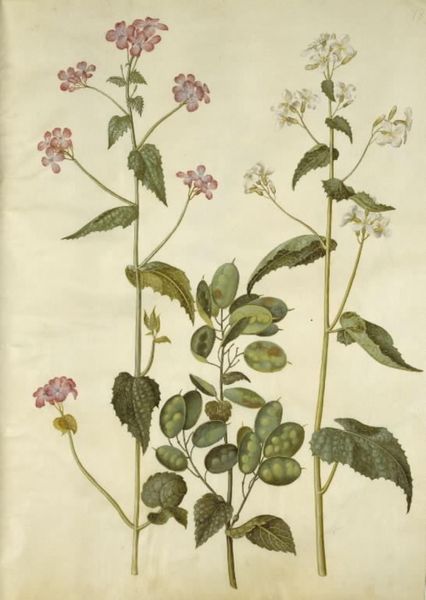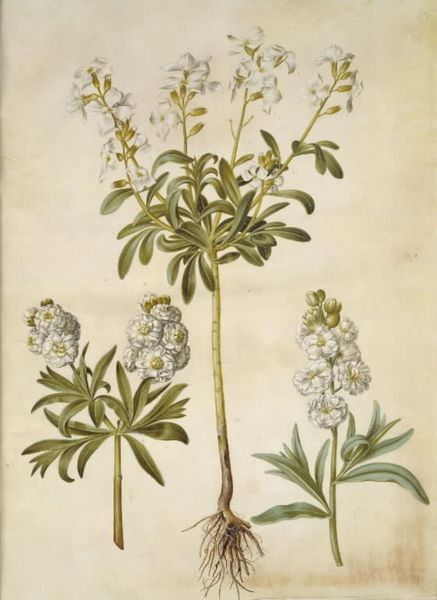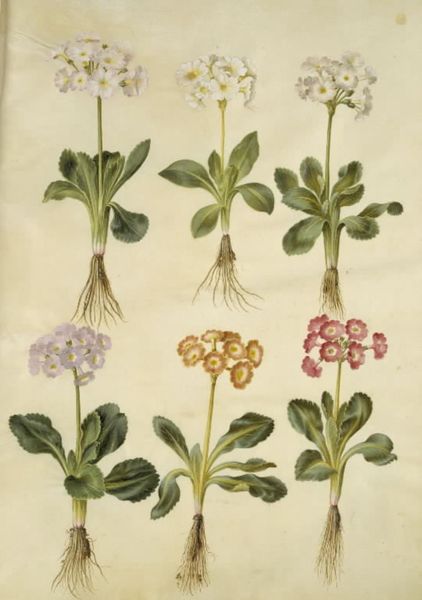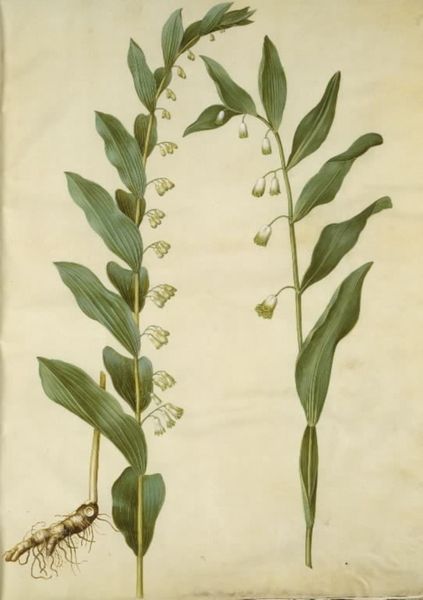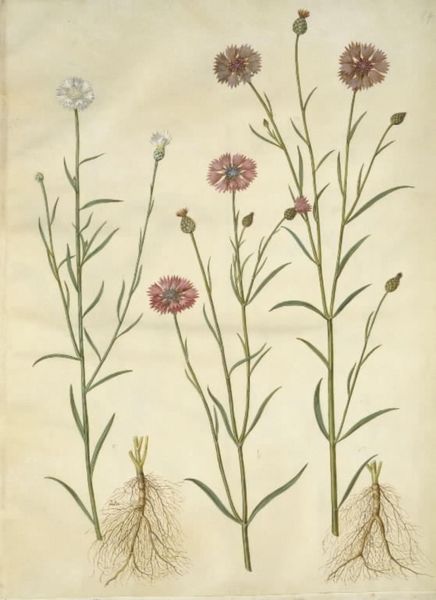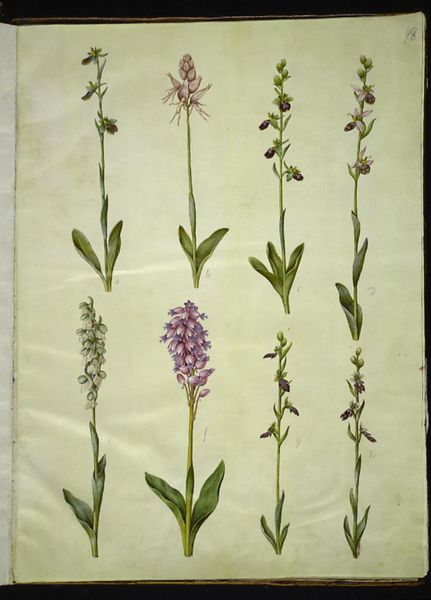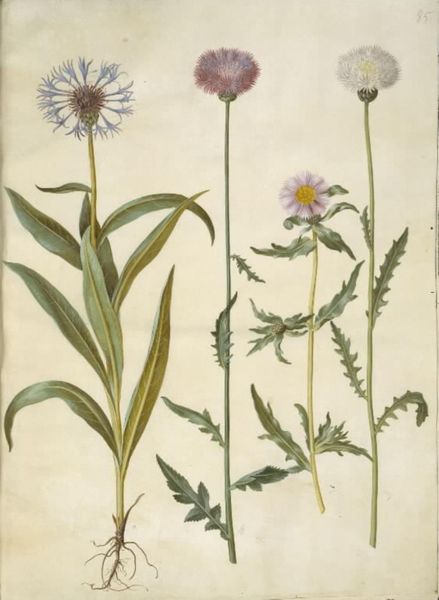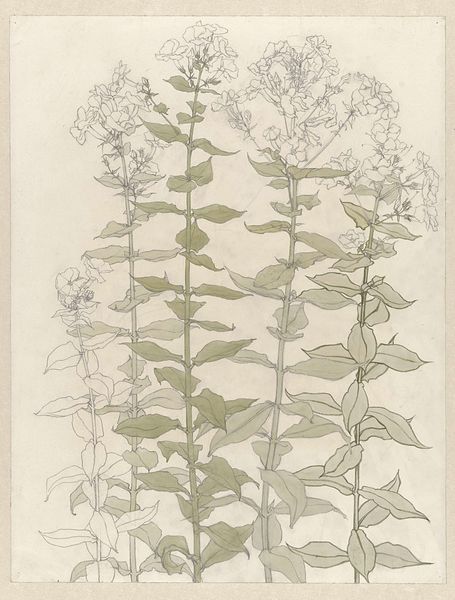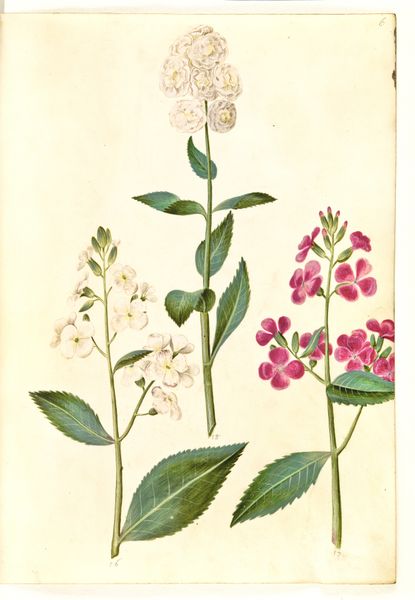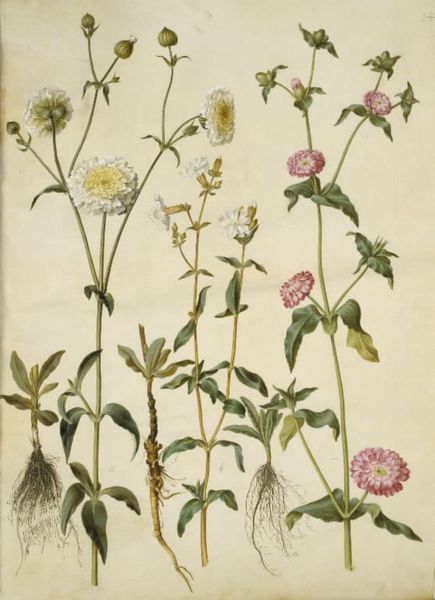
Hesperis matronalis (almindelig aftenstjerne) 1649 - 1659
0:00
0:00
drawing, gouache, watercolor
#
drawing
#
gouache
#
watercolor
#
watercolour illustration
#
northern-renaissance
#
watercolor
#
realism
Dimensions: 505 mm (height) x 385 mm (width) (bladmaal)
Editor: Here we have "Hesperis matronalis," or "almindelig aftenstjerne," by Hans Simon Holtzbecker, created sometime between 1649 and 1659 using watercolor, gouache, and drawing techniques. The depiction feels incredibly precise, almost scientific. What do you make of its carefully rendered details? Curator: These flowers, commonly known as Dame's Rocket today, aren’t merely botanical illustrations, but repositories of cultural memory. The rendering, rooted in realism, speaks to a Northern Renaissance fascination with the natural world, but what stories might the "aftenstjerne," the evening star, whisper to us? Editor: Evening star… That gives a completely different feel! What kind of stories? Curator: Consider how flowers functioned symbolically. Beyond beauty, plants conveyed moral and emotional narratives. What could the colors – the white and soft lilac – imply about the virtues, or even the social status, associated with this flower? Perhaps it was favored for its scent or its medicinal properties. These qualities accrue meaning. Editor: So, the evening association… a white flower… Is there a connection to the night or even death, maybe a quiet reflection? Curator: Potentially. White, especially, has multifaceted meanings - purity, mourning, divinity. It invites us to consider the duality of symbolism. It also draws our eye to how color carries powerful emotional information and alters how we see things, then and now. The level of realism lends authority to the interpretation. What's revealed or concealed about its place within its era by it, I wonder? Editor: That’s a lot to consider in just one botanical illustration! It really does make me wonder what else is there. Curator: Indeed, and perhaps that's precisely what Holtzbecker intended – to prompt questions, and connections beyond the purely representational.
Comments
No comments
Be the first to comment and join the conversation on the ultimate creative platform.

